Author: Thomas MacKinnon, Demand Generation Manager, Armacell LLC and member of NIA Technical Information Committee and the U.S. Technical Advisory Group ISO TC163. Original and full article can be found at: https://insulation.org/io/articles/what-engineers-need-to-know-and-where-support-can-be-found/
Design engineers need to maintain significant knowledge of many different parts of the systems they design in order to successfully meet the required criteria, within the specified budget. With all the different elements to keep in mind, insulation may not be at the top of the list when designing training programs for engineers. However, insulation can offer significant benefits to the systems, equipment, people, and the sustainable initiatives of the client company.
System and Equipment Protection
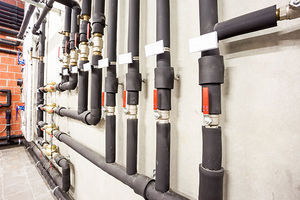 The use of insulation throughout the different elements of a system is crucial to ensure that it will work as efficiently as possible. Insulation helps maintain the temperature of the system—from point A to point B—with as little fluctuation as possible, keeping hot systems hot and cold systems cold. This reduction in temperature variability allows the system to operate close to the designed conditions and greatly extends the life of the equipment. For below-ambient systems, the use of insulation stems the threat of condensation formation and its effects on equipment. Using the right amount of insulation to maintain the surface temperature above the dew point of the space prevents the degradation of the system due to water issues, such as corrosion, and prevents the destruction of the surrounding building elements from the formation of water.
The use of insulation throughout the different elements of a system is crucial to ensure that it will work as efficiently as possible. Insulation helps maintain the temperature of the system—from point A to point B—with as little fluctuation as possible, keeping hot systems hot and cold systems cold. This reduction in temperature variability allows the system to operate close to the designed conditions and greatly extends the life of the equipment. For below-ambient systems, the use of insulation stems the threat of condensation formation and its effects on equipment. Using the right amount of insulation to maintain the surface temperature above the dew point of the space prevents the degradation of the system due to water issues, such as corrosion, and prevents the destruction of the surrounding building elements from the formation of water.
Personnel/Occupant Protection
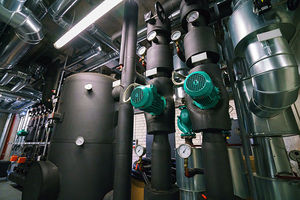 Insulation not only protects systems and associated equipment but also the people who maintain and interact in the spaces around these systems. High- and cryogenic-temperature systems commonly reach surface temperatures that can cause serious burns or injury. The need to protect workers is addressed by the formulation of ASTM and OSHA standards and guides for designers to reference in order to limit contact. These standards and guides, and many others, point to the need for insulation to maintain the surface at a safe temperature and protect those working on or around the equipment.
Insulation not only protects systems and associated equipment but also the people who maintain and interact in the spaces around these systems. High- and cryogenic-temperature systems commonly reach surface temperatures that can cause serious burns or injury. The need to protect workers is addressed by the formulation of ASTM and OSHA standards and guides for designers to reference in order to limit contact. These standards and guides, and many others, point to the need for insulation to maintain the surface at a safe temperature and protect those working on or around the equipment.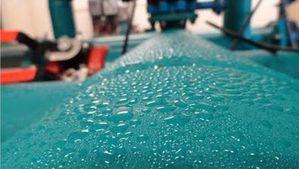 Maintaining the correct surface temperature through the use of insulation helps prevent condensation and the resulting issues that can arise, but prevention of condensation is critical to prevent instances that can lead to health issues or injury. The formation of water due to system surface condensation on walkways, ladders, or other access points can lead to slips or falls. Mold or mildew due to the formation of water from condensing systems, also can greatly reduce the indoor air quality of the space and lead to adverse health effects for the occupants. In addition, the use of equipment and transport of air or liquids through these systems can cause a significant amount of noise and greatly affect the people around the space. High levels of noise can lower the value of a designed space, cause increased stress, create negative physiological and psychological effects for the occupants, and can be a major hazard for workers. Standards and legislation commonly set limits on the amount of noise generated on industrial sites, and penalties can be severe if the limits are breached for the effect on the surrounding area. Proper insulation use with the equipment greatly lowers the amount of noise generated.
Maintaining the correct surface temperature through the use of insulation helps prevent condensation and the resulting issues that can arise, but prevention of condensation is critical to prevent instances that can lead to health issues or injury. The formation of water due to system surface condensation on walkways, ladders, or other access points can lead to slips or falls. Mold or mildew due to the formation of water from condensing systems, also can greatly reduce the indoor air quality of the space and lead to adverse health effects for the occupants. In addition, the use of equipment and transport of air or liquids through these systems can cause a significant amount of noise and greatly affect the people around the space. High levels of noise can lower the value of a designed space, cause increased stress, create negative physiological and psychological effects for the occupants, and can be a major hazard for workers. Standards and legislation commonly set limits on the amount of noise generated on industrial sites, and penalties can be severe if the limits are breached for the effect on the surrounding area. Proper insulation use with the equipment greatly lowers the amount of noise generated.
Finally, while not all systems will be in areas with a high exposure potential, the risk of fire propagation is another key consideration for all mechanical system design. These systems can run throughout buildings, carry potentially explosive materials, or be located in areas that are difficult to access; so the mitigation of fire and smoke is essential to prevent injury to the occupants and to surrounding areas. Insulation is one of the first elements of the system to be exposed and will be the first line of defense in helping to withstand the effects of fire and smoke, controlling its damage and the speed at which it can spread along the entire system. In a fire event, insulation can protect the equipment and, more importantly, extend the amount of time for people to escape the affected area.
Environmental Protection
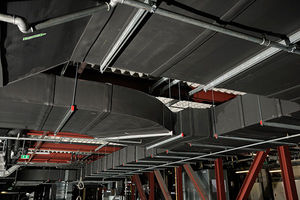 With the growth of and focus on sustainable designs, the ability to lower energy use is top of mind in every system design. Insulation is the only system improvement that provides energy savings as soon as it is installed, without requiring energy to operate. Because insulation improvements prevent a system from unnecessarily losing energy, allowing it to operate at designed efficiency levels, use of insulation equates to less energy being used in operation. Not only does this mean the system uses less energy, but also that less energy would need to be produced to run the system, and less pollution would be created in the energy-generation process.
With the growth of and focus on sustainable designs, the ability to lower energy use is top of mind in every system design. Insulation is the only system improvement that provides energy savings as soon as it is installed, without requiring energy to operate. Because insulation improvements prevent a system from unnecessarily losing energy, allowing it to operate at designed efficiency levels, use of insulation equates to less energy being used in operation. Not only does this mean the system uses less energy, but also that less energy would need to be produced to run the system, and less pollution would be created in the energy-generation process.
Insulation Material Advantages/Disadvantages
There are numerous different insulation material types, and each has innate advantages or disadvantages when compared to the others, depending on the requirements of the application. Knowing the differences between the material types allows the design engineer to choose the best insulation for the application while balancing the performance and budgetary requirements of the owner. Failure to consider all of the needs and benefits can lead to the engineer choosing an insulation product that leads to future complications or overspending on a product that does not provide a corresponding amount of benefit over the next-best material. When making these decisions, the engineer also must take into consideration the accessories and necessary protection associated with the insulation system.
Insulation Is Not “Specify It and Forget It”
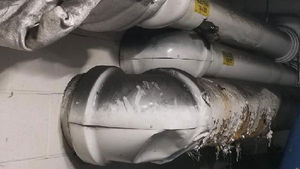 Insulation only works as well as it was installed, and any problem with the installation of the insulation system will only manifest itself over time. It is critical for the insulation system to be inspected as it is being installed. To fill this need in the industry, there are NIA Certified Insulation Inspectors to make sure all insulation installations are done in accordance with the specifications. After the designed system is operational, proper maintenance to discover and fix potential problems must be continued. In the 2017 report, NIA estimated that between 10% and 30% of all originally installed insulation was missing or damaged. Selecting the right product in the specification for long-term performance is complemented by replacing and maintaining the insulation to ensure the benefits of the insulation system are achieved and the protection of the equipment, people, and environment is maintained.
Insulation only works as well as it was installed, and any problem with the installation of the insulation system will only manifest itself over time. It is critical for the insulation system to be inspected as it is being installed. To fill this need in the industry, there are NIA Certified Insulation Inspectors to make sure all insulation installations are done in accordance with the specifications. After the designed system is operational, proper maintenance to discover and fix potential problems must be continued. In the 2017 report, NIA estimated that between 10% and 30% of all originally installed insulation was missing or damaged. Selecting the right product in the specification for long-term performance is complemented by replacing and maintaining the insulation to ensure the benefits of the insulation system are achieved and the protection of the equipment, people, and environment is maintained.
There are many benefits to the proper use of insulation material—for the systems and equipment the engineer designs, for the people who work with or occupy the space, and for the environment at large. But these benefits can only be fully realized by the engineer’s proper understanding of each material’s properties and regulating standards, as well as the need for proper follow-up and maintenance.
Support and Resources
NIA offers several additional resources to assist mechanical engineers in their insulation efforts. Go to www.Insulation.org to find additional articles and blogs, further design guides—such as the Mechanical Insulation Design Guide (MIDG)—insulation application calculators, and much more.
[1] “The Power of Insulation,” National Insulation Association, recovered from https://insulation.org/wpcontent/uploads/2018/12/PowerofInsulation_2017.pdf
